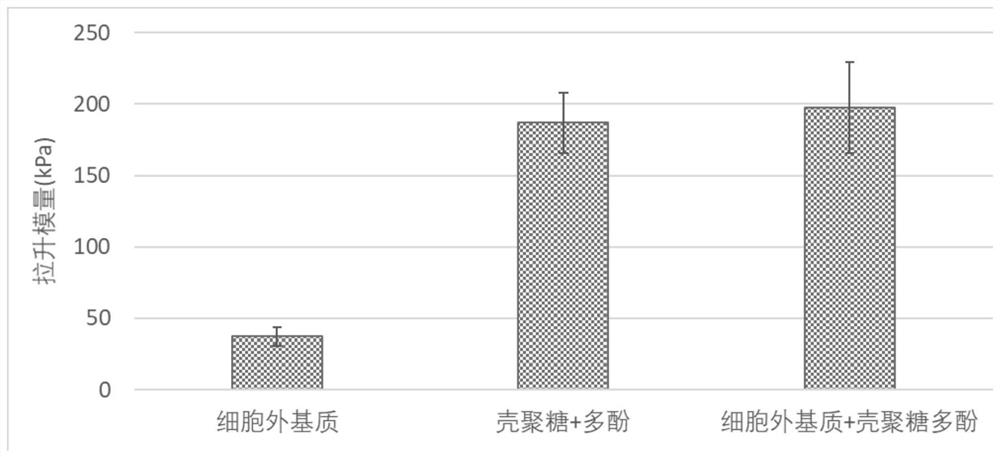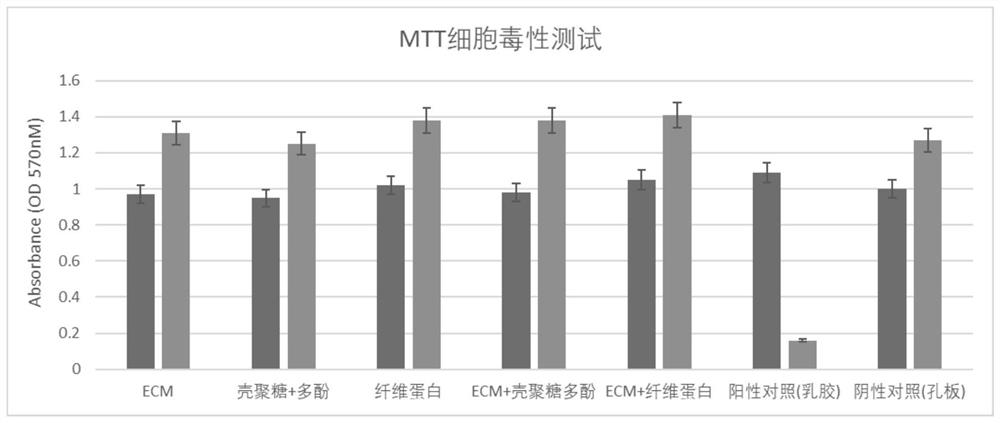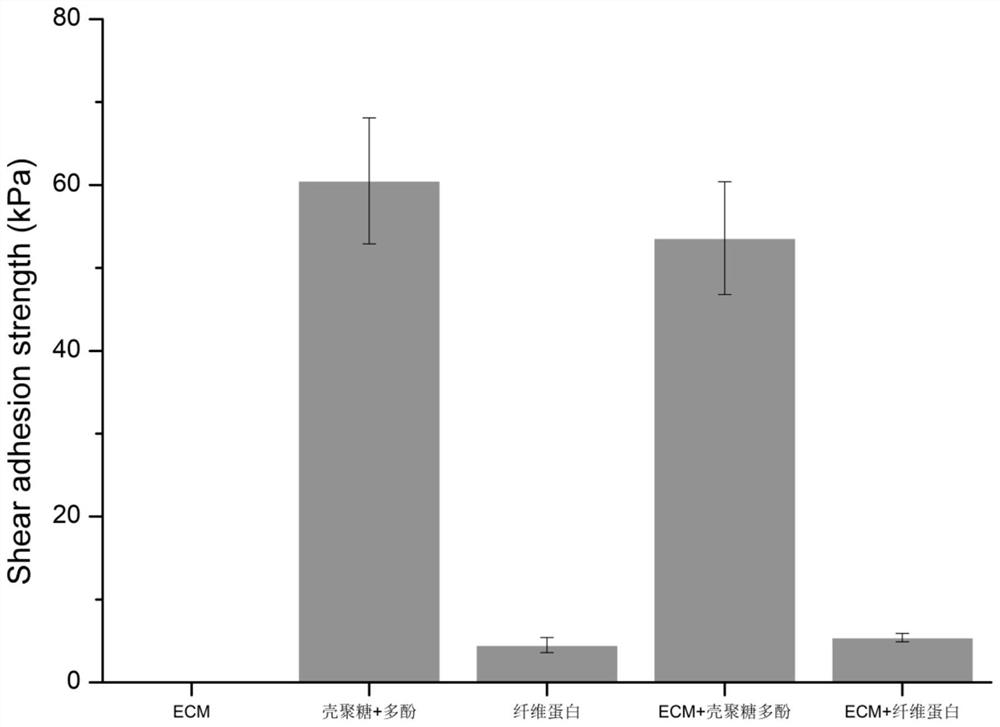Tissue-specific wound dressing as well as preparation method and application thereof
A tissue-specific, wound dressing technology, applied in the fields of application, medical formula, medical science, etc., can solve the problems of hemostasis and healing of wounds, the inability to hemostasis and repair of acute wounds, and the long process, so as to achieve good hemostasis and healing of wounds, The effect of shortening the time of wound healing and tissue repair
- Summary
- Abstract
- Description
- Claims
- Application Information
AI Technical Summary
Problems solved by technology
Method used
Image
Examples
preparation example Construction
[0047] The present invention also provides a preparation method for the above-mentioned tissue-specific wound dressing, which includes the following steps:
[0048] Preparation of S1 extracellular matrix:
[0049] Wash the fresh animal tissue with deionized water, dry the obtained decellularized powder after decellularization treatment, and make an extracellular matrix solution; the decellularization treatment includes repeated freezing and thawing, trypsin digestion, adding surfactant Treatment, ammonia water decellularization treatment and epoxyacetic acid treatment in one or more ways to deal with;
[0050] S2 Mixing the extracellular matrix solution and the gel-forming material to prepare a tissue-specific wound dressing for applying on the wound.
[0051] In step S1, the obtained decellularized powder is digested with pepsin to obtain an extracellular matrix solution.
[0052] The present invention also provides the application of the tissue-specific wound dressing as a...
Embodiment 1
[0055] Preparation of Arterial Tissue-Specific Wound Dressing:
[0056] Preparation of S1 first ingredient
[0057] S11 Take fresh porcine arteries, cut them along the longitudinal axis, remove the adventitia and endothelium, cut them into small pieces of 1cm*1cm, freeze and thaw three times between -20°C and room temperature, and wash them three times with normal saline. 15 minutes;
[0058] S12 Put the treated porcine blood vessel pieces into 1% Triton 100 and 20mM ammonia water for decellularization and shake for 12 hours. After the treatment, the decellularized blood vessels were stirred and washed in distilled water for 3 times, each time for 30 minutes. The obtained vascular decellularized material was treated with 0.1% peroxyacetic acid for 3 hours, stirred and washed with physiological saline for 3 times for 30 minutes each time, and washed 3 times in distilled water for 15 minutes each time.
[0059] S13 Freeze-dry the obtained vascular decellularized scaffold, shre...
Embodiment 2
[0067] Preparation of liver tissue-specific wound dressings in situ:
[0068] S1 liver decellularized matrix solution preparation
[0069] (1) Fresh pork liver was cut into 1cm thin slices, washed with deionized water, repeatedly frozen and thawed at -20°C and room temperature for 3 times, digested with trypsin for 120 minutes, and washed with distilled water for 3 times;
[0070] (2) The processed pork liver slices were decellularized and stirred with 1.5% Triton 100, 20mM ammonia water and 0.5% EDTA solution, and the decellularized liver obtained after the treatment was stirred and washed 3 times in normal saline, each time for 30 minutes Afterwards, treat with 0.1% peracetic acid for 3 hours, stir and wash with normal saline for 3 times, after 30 minutes each time, wash 3 times in distilled water, 15 minutes each time;
[0071] (3) The decellularized porcine liver obtained was freeze-dried and shredded, and ground to obtain liver decellularized extracellular matrix powder....
PUM
 Login to View More
Login to View More Abstract
Description
Claims
Application Information
 Login to View More
Login to View More - R&D
- Intellectual Property
- Life Sciences
- Materials
- Tech Scout
- Unparalleled Data Quality
- Higher Quality Content
- 60% Fewer Hallucinations
Browse by: Latest US Patents, China's latest patents, Technical Efficacy Thesaurus, Application Domain, Technology Topic, Popular Technical Reports.
© 2025 PatSnap. All rights reserved.Legal|Privacy policy|Modern Slavery Act Transparency Statement|Sitemap|About US| Contact US: help@patsnap.com



